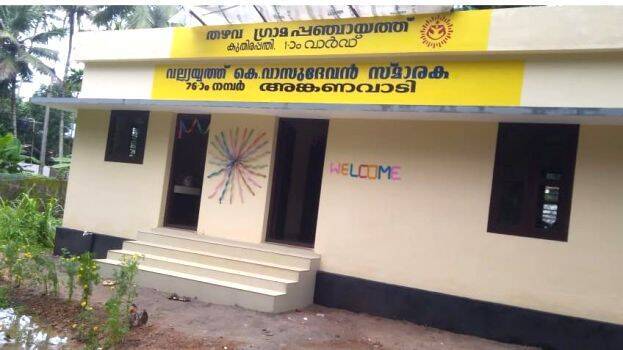

In foreign countries, especially in developed countries, those who look after and train young children are highly paid. Such persons must also possess higher educational qualifications. However, the care and training of children below LKG in India have remained a neglected area for years. Leaders have been repeating that today's children as tomorrow's citizens. The central government first introduced the Integrated Child Development Scheme (ICDS) in 1975 as a solution to malnutrition which created major health problems among children in rural areas. Anganwadis were started in the country with the aim of alleviating the malnutrition of young children and imparting basic lessons. Although the ICDS was discontinued by the Morarji Desai government in 1978, it was later relaunched by the government that followed.
There are now over one million Anganwadis in India. There are now over 10 lakh Anganwadis in India. There are more than two and a half lakh employees as teachers and assistants. Anganwadis, which were initially started to alleviate the hunger of children, have much more importance in society nowadays. They play an important role in children's character development and language learning. The problem of malnutrition in children is also solved by providing a regular supply of eggs, milk and bread.
On average, there are at least ten children in Anganwadis. Anganwadis are also shelters for the young children of working parents. But the Anganwadi workers are one of the most neglected groups. They have had to take to the streets several times to increase their honorarium. There are 33115 Anganwadis and 66,230 employees in Kerala. This includes both permanent and temporary employees. Workers receive an honorarium of Rs 12,000 and helpers Rs 8,000. About 60 per cent of this is borne by the Centre and 40 per cent by the state. The long-standing demand of Anganwadi workers and helpers to include themselves under the Gratuity Act has come to fruition with the Supreme Court ruling in their favour. The Supreme Court has found that Anganwadis are institutions that fall under the definition of Establishment in the Gratuity Act. With this, all permanent employees are entitled to gratuity.
The bench comprising Justices Ajay Kumar Rastogi and Abhay S Oka gave the verdict by interpreting the provisions of the Payment of Gratuity Act, 1972. The court ordered that gratuity benefits should be disbursed to all eligible employees within three months with 10 per cent simple interest. This benefit is being made available to the most marginalized in the community. They absolutely deserve gratuity considering the work they do. Both the central and the state governments must consider without delay the apex court's observation that the service and pay system of Anganwadi workers must be revised.